|
If you want to know what fear poisons the soul of a people and plagues our collective thought, you look at the villains of our stories. Our heroes tell us who we aspire to be. Our villains tell us who we are. Mary Shelley’s classic Frankenstein was published during the golden age of the enlightenment. It tells the story of a monster that we created, not a supernatural being, but a human-made being forged from the fire of our new-found scientific knowledge. Less than 10 years after the atomic bombings of Hiroshima and Nagasaki, Godzilla made its debut in Japanese cinema. It told the story of a sea monster from far away that breathes fire and can lay waste to entire cities. The monsters and villains of our stories reveal our deepest anxieties. Perhaps there is no villain as iconic in pop culture as Joker. In TV and Film, the sociopath clown-face supervillain with no superhuman abilities scourges the people of Gotham City and in doing so, reveals a lot about who we are. 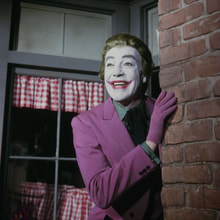 Joker as Menace I grew up watching reruns of the 1960s Batman TV series as a kid. I loved the show. Episodes would end with Batman & Robin in a pickle, and I, for the life of me, could never figure out how in the world they might escape. Surely they will be eaten by sharks! Surely the laser beam will slice them in two! Oh the humanity! My anxiety was short-lived. As sure as the sun rises, the capped crusader found a way to escape the malicious clutches of his nemesis and restore justice and order - usually by returning the stolen painting to the museum. It was the 60s, communism was the enemy. In the struggle of ideologies, the lines were clearly drawn. We were the good guys. They were the bad guys. Good always prevails. The Joker of the 1960s wasn’t more than a menace and a prankster whose nefarious schemes were short-lived. There was no stopping the righteous crusade. 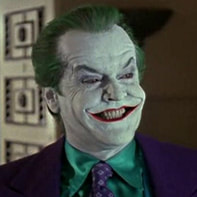 The Joker as Mob Boss Joker showed its funny face again in Tim Burton’s 1989 film Batman. I was 10-years-old, I remember the line of people that stretched around the block of my local two-screen theater. I thought this movie must be really important. It looked like everyone in town was going to see it. The collapse of the Soviet Union in the latter half of the 1980s shifted our focus from the enemy abroad to the enemies within. In America, urban crime rates reached their pinnacle. It’s no wonder, In Batman, the Joker evolved from prankster to gangster. The charismatic character became the ultimate mob boss. His gang of thugs blighted the city of Gotham, mostly out of spite. Joker and his cronies represented the fear of urban life, specifically the dark alleys and shadowy corners where the good citizens fear to tread. The hero’s task in facing Joker was to make the streets of Gotham (and America) safe once again. 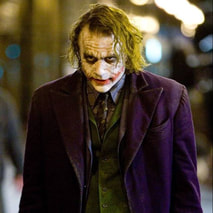 The Joker as Moral Ambiguity In 2008, 19 years after Batman, Joker returned to cinemas in the second film in Christopher Nolan’s Batman trilogy, The Dark Knight. This Joker, however, is not interested in being a gang leader or in the accumulation of money or power. His desire is the destruction of Batman himself, the icon of moral authority. Joker’s goal is to expose Batman (literally, “take off your mask”) and the fallacy of moral objectivity. By forcing our hero and the citizens of Gotham to make choices about who lives and who dies, the self-righteous lines we draw - we are good/they are bad - become unrecognizable. It is clear that Joker is a bad guy, but the people of Gotham (and the story’s audience) are left questioning: are we as morally right as we think we are? This was the question of the time. After the horrific events of 9/11, we thought we had the clear moral objective to bring to justice those responsible and to never let anything like it happen again. But seven years into the seemingly unending occupation of Iraq and Afghanistan, we were asking who exactly is the bad guy? We thought we knew. We thought we were justified. But our pursuit of the phantom ideology that hid in caves and exposed itself violently in public spaces came at a cost - in the lives of our soldiers and innocent civilians - but also in our moral credibility. The Dark Knight ends with Batman on the run with the citizens of Gotham believing him to be a criminal, not the righteous hero they thought he was. 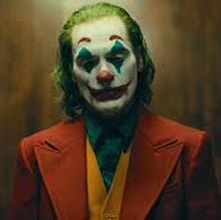 Joker as Mental (and Social) Illness This brings us to the most recent portrayal of the character in this year’s film Joker, an origin film that explores the question: how did Arthur Fleck become the supervillain Joker? Was it mental illness, an abusive home life, bullying, the breakdown of civil services? All of the above? The film doesn’t answer the question. What is most striking to me about this film is the lack of moral conflict. There are no “good guys.” The “haves” are bullies to the “have nots” thus, they have no moral authority to stand in opposition to the cynical worldview of Arthur Fleck/Joker and his followers. And in Joker’s view, that means they get what they deserve. Joker is a villain for our time. Those in power have lost moral credibility. Our political leaders are bullies, not role models. The Me Too movement has exposed the abusive dark side of power. The “haves” continue to accumulate wealth, while the “have nots” struggle to keep up and live with a genuine threat that they may end up living on the streets (ahem, Los Angeles). Meanwhile, we are plagued with unconscionable terrorist attacks in the form of mass shootings. Our villain is not an agent from foreign soil but our very own citizens. Masked by the masses, we are stunned and sickened when they strike. “Why?“ We argue. Is it mental illness, broken families, a culture of bullying, the lack of social services to identify the vulnerable and potentially violent? Is it the proliferation of the tools of terror? In the film, Joker strikes chaos - and rises to godlike villainy - with the use of a simple handgun that was gifted to him. A weapon he should never have had. Like Gotham City, we are searching for a just hero. Joker does not give us that hero, but the film does foreshadow, albeit tepidly, the makings of one in the child Bruce Wayne. But the question remains, who will that hero be? What does a hero that must confront our social illnesses look like? He or she will need more than martial arts training and all those wonderful toys. The hero for our time will require a courageous humility and a “goodness” we have not seen in very long time. Note: This reflection on the Joker is not meant to be an exhaustive exploration of the character. I do not take into account the comic books, animated series, or Suicide Squad because I have not read or seen those stories.
0 Comments
Leave a Reply. |
AuthorA WRITER AND TRAVELER KEEPING THE FAITH IN LOS ANGELES Subjects
All
Archives
August 2022
© 2022
|
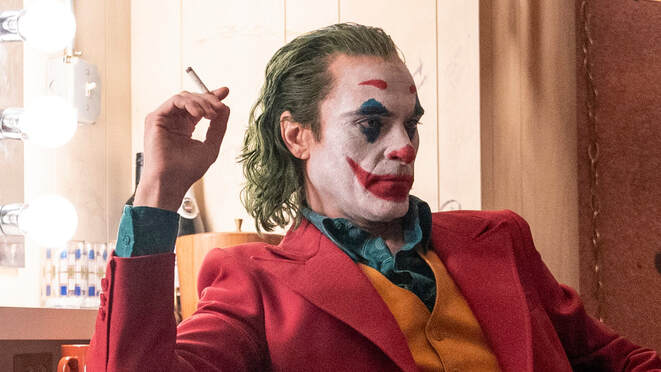
 RSS Feed
RSS Feed